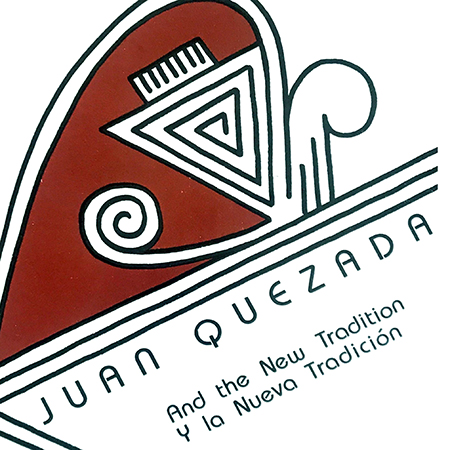

Detail, exhibition postcard from Juan Quezada and the New Tradition
In the nearly 50 years since the Maxwell Museum of Anthropology has been in its present location, the Museum has hosted approximately 150 temporary exhibitions. Here, we look back at some of them.
The 1979-80 traveling exhibition Juan Quezada and the New Tradition originated at the Visual Arts Center of California State University, Fullerton. From there, it travelled to Chaffey College, theUniversity of California, Berkeley, the Maxwell Museum, and the Heard Museum. Maxwell Director Dr. J.J. Brody and Curator Dr. Mari Lynn Salvador added a distinctive flavor to the Maxwell Museum show, drawing on the strengths of the Museum’s collections of archaeological and contemporary ceramics.
However, the main focus of the exhibition was the work of Juan Quezada. Born in 1940 and raised in the village of Mata Ortiz in northern Mexico, the young Quezada was fascinated by decorated ceramic fragments he saw around the nearby ruins of Paquimé (Casas Grandes; AD 1200-1450). At age 16, he began what would become more than 15 years of experimentation to replicate the forms and decoration of the elaborately painted ceramics. In the mid-1970s, his distinctive ceramics caught the attention of anthropologist Spencer MacCallum, who subsequently joined with Quezada to promote them to galleries and museums in California and the U.S. Southwest. McCallum was a leading force behind this exhibition: the first major show of the work of Quezada and other potters of Mata Ortiz.
When the exhibition opened at the Maxwell, Quezada and four additional potters from the town (including three of his siblings) attended the opening. The exhibition featured more than two dozen vessels from the Maxwell’s extensive collection of archaeological ceramics from Paquimé as well as contemporary and Ancestral Pueblo pottery.